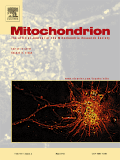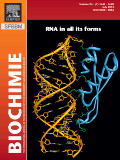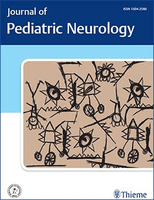
MITOCHONDRION
Scope & Guideline
Exploring the Powerhouses of Cellular Life
Introduction
Aims and Scopes
- Mitochondrial Dynamics and Functionality:
Research on the mechanisms governing mitochondrial dynamics, including fusion, fission, and transport, and their implications for cellular energy metabolism and homeostasis. - Mitochondrial Genetics and Genomics:
Studies investigating mitochondrial DNA mutations, heteroplasmy, and their associations with various diseases, including neurodegenerative disorders and metabolic syndromes. - Mitochondrial Metabolism and Bioenergetics:
Explorations of mitochondrial metabolic pathways, such as the Krebs cycle and oxidative phosphorylation, and their roles in cellular energy production and metabolic reprogramming. - Mitochondrial Dysfunction in Disease:
Research highlighting the contribution of mitochondrial dysfunction to a range of diseases, including cancer, diabetes, neurodegenerative disorders, and cardiovascular diseases. - Therapeutic Interventions Targeting Mitochondria:
Innovative approaches to target mitochondrial function for therapeutic benefits, including mitochondrial transplantation, pharmacological agents, and gene therapies. - Environmental and Physiological Impacts on Mitochondria:
Studies examining how environmental factors, such as hypoxia and oxidative stress, affect mitochondrial function and contribute to disease pathology.
Trending and Emerging
- Mitochondrial Transfer and Transplantation:
An increasing focus on the therapeutic potential of mitochondrial transfer and transplantation techniques for treating diseases, particularly in regenerative medicine and organ repair. - Mitochondrial Role in Neurodegenerative Diseases:
A growing body of research is dedicated to understanding the role of mitochondrial dysfunction in neurodegenerative diseases, with implications for new therapeutic strategies and patient management. - Mitochondrial Metabolism and Cancer Therapy:
Emerging studies are exploring how targeting mitochondrial metabolism can influence cancer treatment outcomes, particularly in the context of metabolic reprogramming and drug resistance. - Mitochondrial Dynamics as Therapeutic Targets:
Research increasingly emphasizes the importance of mitochondrial dynamics (fusion, fission, and mitophagy) in disease contexts, suggesting that modulating these processes could offer new therapeutic avenues. - Mitochondrial Biomarkers in Disease Diagnosis:
There is a rising interest in identifying mitochondrial DNA variations and other mitochondrial-related biomarkers for the diagnosis and prognosis of various diseases, including metabolic disorders and cancers. - Machine Learning and Artificial Intelligence in Mitochondrial Research:
The integration of machine learning and AI techniques to analyze mitochondrial data is gaining traction, enhancing the capacity for high-throughput analysis and predictive modeling in mitochondrial biology.
Declining or Waning
- Basic Mitochondrial Structure Studies:
Research primarily focused on the structural aspects of mitochondria, such as ultrastructure without functional implications, has seen a decline as the field moves towards more integrative functional studies. - Mitochondrial Research in Non-Mammalian Models:
While non-mammalian models (like yeast and plants) have contributed significantly to mitochondrial research, there seems to be a waning interest in this area compared to mammalian studies that directly apply to human health. - Static Mitochondrial Imaging Techniques:
The use of traditional imaging techniques to study mitochondria in fixed states is diminishing as advanced live-cell imaging and dynamic tracking methods gain favor for their ability to capture real-time mitochondrial behavior.
Similar Journals

BIOCHIMIE
Connecting Researchers to the Heart of BiochemistryWelcome to BIOCHIMIE, a prestigious journal dedicated to advancing the field of biochemistry and related areas of medicine. Published by Elsevier France - Editions Scientifiques Medicales Elsevier, this journal has been a cornerstone of scientific communication since its inception in 1971 and will continue to contribute essential research until 2024. With an impressive impact factor and categorized in Q2 for Biochemistry and Q1 for Miscellaneous Medicine, BIOCHIMIE ranks among the top quartiles in its fields, underscoring its significance and influence in the scientific community. Targeting a wide audience of researchers, professionals, and students, the journal publishes high-quality articles that explore innovative research and developments in biochemistry, genetics, and molecular biology, reflected in its Scopus ranking of 136 out of 438 in the biochemistry category. Despite its traditional publication format, the journal remains committed to promoting impactful research that drives the future of biochemistry and molecular medicine, ensuring that readers have access to critical insights that foster advancements in health and science.

TRENDS IN ENDOCRINOLOGY AND METABOLISM
Leading the charge in endocrine research.TRENDS IN ENDOCRINOLOGY AND METABOLISM, published by CELL PRESS, stands as a pivotal resource in the fields of endocrinology, diabetes, and metabolism. With its ISSN 1043-2760 and E-ISSN 1879-3061, this esteemed journal has been a leading platform since its inception in 1989, currently projected to span until 2024. Recognized within the top quartile (Q1) of its category, it boasts impressive Scopus rankings, holding the 4th position in Endocrinology and 8th in Endocrinology, Diabetes, and Metabolism. These rankings underscore its significant impact, evidenced by an impressive percentile rank of 97th and 96th respectively. The journal is committed to facilitating the dissemination of cutting-edge research and innovative insights, making it an essential read for researchers, clinicians, and students seeking to stay informed on the latest advancements in these critical fields. With a robust focus on providing thorough reviews and original research articles, TRENDS IN ENDOCRINOLOGY AND METABOLISM continues to shape the understanding and treatment of metabolic disorders.

ACTA ZOOLOGICA ACADEMIAE SCIENTIARUM HUNGARICAE
Exploring the Depths of Animal SciencesACTA ZOOLOGICA ACADEMIAE SCIENTIARUM HUNGARICAE, published by the Hungarian Natural History Museum, is a distinguished open access journal dedicated to advancing knowledge across the fields of Animal Science, Zoology, Ecology, Evolution, Behavior, and Systematics. Established in 2003 as an open access platform, this scholarly journal has actively contributed to the dissemination of critical research since 1996, positioning itself within the Q3 quartile in both its primary fields as of 2023. With its ISSN 1217-8837, ACTA ZOOLOGICA serves as a vital resource for researchers, professionals, and students aiming to explore and expand their understanding of animal biodiversity and ecology. Its publication features a variety of empirical studies, reviews, and critical commentaries that rigorously address contemporary issues in zoological sciences, underlining its commitment to fostering academic excellence and environmental sustainability. Researchers can access the journal’s extensive archives to deepen their inquiry into animal life, making it an essential addition to any academic library.

ANTIOXIDANTS & REDOX SIGNALING
Transforming Understanding of Oxidative Stress MechanismsANTIOXIDANTS & REDOX SIGNALING, published by MARY ANN LIEBERT, INC, is a premier journal dedicated to advancing the understanding of oxidative stress, antioxidants, and redox biology in various health contexts. With an impressive track record since its inception in 1999, this journal has continually evolved, currently converging towards 2024 as a core resource for researchers in biochemistry, cell biology, and molecular medicine. It holds a distinguished position in Q1 across several categories, including Biochemistry, Cell Biology, and Clinical Biochemistry, reflecting its critical role in disseminating high-quality research that impacts the fields of physiology and medicine. Despite not being an open-access journal, ANTIOXIDANTS & REDOX SIGNALING is renowned for its rigorous peer-review process and wide reach, ensuring that published articles are both influential and accessible to professionals, academia, and students alike. Researchers can benefit from its comprehensive articles that delve into cutting-edge discoveries and emerging therapies related to oxidative stress and its biological implications.

Redox Biology
Pioneering Insights into the Role of Redox in Health and DiseaseRedox Biology, published by Elsevier, stands as a premier open-access journal in the fields of biochemistry, clinical biochemistry, and organic chemistry. Since its inception in 2013, the journal has provided a vibrant platform for researchers to disseminate high-quality findings that advance our understanding of redox biology and its implications in health and disease. With an impressive impact factor and ranked Q1 across multiple chemistry disciplines, Redox Biology is recognized for its significant contributions to the scientific community, drawing attention from a global audience. This journal aims to foster a rich dialogue among scientists, clinicians, and students, emphasizing the critical role of redox processes in biological systems. Located in the Netherlands, Redox Biology has become an essential resource for those seeking to explore the nuanced interactions of reactive species and their roles in cellular function and pathology, making it a must-read for anyone interested in the forefront of biochemistry research.

Journal of Pediatric Neurology
Transforming pediatric neurology through critical research.Journal of Pediatric Neurology, published by GEORG THIEME VERLAG KG, stands as a dedicated resource in the field of pediatric neurology, navigating the complex interplay of neurological and developmental disorders affecting children. With its ISSN 1304-2580 and E-ISSN 1875-9041, this journal has been a pivotal platform for advancing research since its inception in 2003, and continues to present critical findings and discussions up to 2024. Although currently categorized in the Q4 quartile for both Neurology (Clinical) and Pediatrics, Perinatology and Child Health within Scopus rankings, the journal's commitment to fostering scholarly dialogue is essential for researchers, clinicians, and students dealing with pediatric patients. Its structured coverage of various neurological disorders, treatment strategies, and innovative therapies contributes to the broader understanding of pediatric neurology, despite the challenges noted in its ranking percentile. By encouraging submissions from diverse disciplines, the journal aims to enhance clinical practice and bridge gaps in knowledge, ensuring a multidisciplinary approach to child health and development.

BIOCHIMICA ET BIOPHYSICA ACTA-BIOENERGETICS
Exploring the Intricacies of Biochemistry and BiophysicsBIOCHIMICA ET BIOPHYSICA ACTA-BIOENERGETICS is a prestigious journal published by Elsevier, dedicated to advancing the fields of biochemistry, biophysics, and cell biology. Established in 1967, this journal is committed to disseminating high-quality research that unveils the molecular mechanisms of bioenergetics, encompassing a wide range of topics from mitochondrial function to energy metabolism. With an exceptional impact factor and a current ranking in the Q1 quartile across multiple categories—specifically ranked #13 in Biophysics and featuring strong positions in Biochemistry and Cell Biology—this journal is recognized for its influential contributions to the scientific community. Scholars, researchers, and students globally benefit from its rigorous peer-review process and access options, although it is not currently open access. By providing a platform for innovative research, BIOCHIMICA ET BIOPHYSICA ACTA-BIOENERGETICS plays a critical role in fostering scientific advancement and collaboration among professionals in the field.

npj Aging
Fostering interdisciplinary dialogue on aging.npj Aging, published by Nature Publishing Group, is a pioneering journal dedicated to advancing our understanding of the biological, clinical, and social aspects of aging. With an E-ISSN of 2731-6068, this open-access journal aims to foster innovative research and interdisciplinary dialogue among scientists, clinicians, and policy-makers. As of its inception in 2023, the journal has quickly established itself within the scholarly community, ranking 15th in Medicine (Geriatrics and Gerontology) and 12th in Biochemistry, Genetics, and Molecular Biology focusing on Aging, reflecting a strong percentile standing in both categories. The journal provides a platform for disseminating important findings that address the complexities of aging, ensuring accessibility for a broader audience. Located at the Macmillan Building, 4 Crinan St, London, England, npj Aging aspires to be an essential resource for those seeking to enhance their understanding and contribute to the field of gerontology.

JOURNAL OF CELLULAR PHYSIOLOGY
Advancing the Frontiers of Cellular KnowledgeJOURNAL OF CELLULAR PHYSIOLOGY, published by Wiley, is a leading peer-reviewed journal that has been at the forefront of cellular research since its inception in 1945. With its prestigious Q1 and Q2 rankings in the fields of Clinical Biochemistry and Cell Biology, this journal is highly regarded within the scientific community, reflecting its significant impact factor and rigorous peer-review process. Addressing the intricacies of cell function and physiology, it serves as a crucial resource for researchers, professionals, and students dedicated to advancing knowledge in the life sciences. The journal publishes cutting-edge research articles, integral reviews, and significant findings that bridge basic biology and clinical applications, ensuring access to high-quality scholarly content that informs current practices and future research directions. Although not open access, the journal maintains a rich archive of studies, making it an essential reference point for those invested in the health and biological sciences.

REDOX REPORT
Empowering Discoveries in Clinical BiochemistryREDOX REPORT is a peer-reviewed academic journal published by Taylor & Francis Ltd, focusing on the latest advancements in the fields of biochemistry, clinical biochemistry, and physiology. Since its inception in 1996 and transitioning to an Open Access model in 2018, this journal has aimed to disseminate high-quality research findings and foster discussions within the scientific community. Positioned in the Q2 quartile across several relevant categories, including Biochemistry, Cell Biology, and Clinical Biochemistry, REDOX REPORT is recognized for its commitment to impactful research. The journal plays a crucial role in bridging the gap between fundamental biochemical research and its clinical applications, making it an essential resource for researchers, professionals, and students alike. With a consistent publication record extending to 2024, REDOX REPORT is dedicated to featuring cutting-edge studies that advance our understanding of redox biology, thereby contributing significantly to the ongoing dialogue in the life sciences.